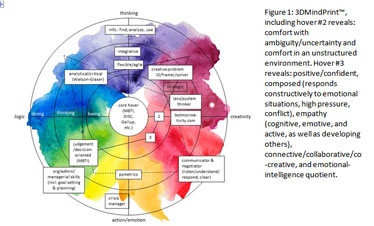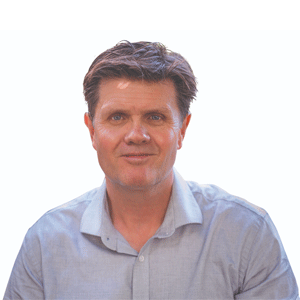THANK YOU FOR SUBSCRIBING
Editor's Pick (1 - 4 of 8)

3D Your New Workforce
Dr. CJ Meadows, Director i2i - The Innovation and Insights Center, S P Jain School of Global Management


Dr. CJ Meadows, Director i2i - The Innovation and Insights Center, S P Jain School of Global Management
 What kind of human do you want for each task? Someone “good with people”? Logical/analytical? An organized “do-er”? “Creative”? With what particular skills?Whether you’re matching a person with a job or with task(s), whether for short-term work or long-term, the new age of work will require that you know more than whether they’re certified in a particular skill.
D1 – Diagnose: Working relationships among individuals, teams, and organizations will remain stickier than the tasks they perform.
What kind of human do you want for each task? Someone “good with people”? Logical/analytical? An organized “do-er”? “Creative”? With what particular skills?Whether you’re matching a person with a job or with task(s), whether for short-term work or long-term, the new age of work will require that you know more than whether they’re certified in a particular skill.
D1 – Diagnose: Working relationships among individuals, teams, and organizations will remain stickier than the tasks they perform. Matching the right individuals with tasks and assembling both high-performing teams and robust organizations will require that you understand a person as well as assess what he/she can do. It will be critical for the task and productive for the relationship.
Wouldn’t be great if you could see a fingerprint of someone’s mind, as well as particular skills in which they’re certified? Essentially, you can (see Figure 1). Based on research presented in the World Economic Forum’s “Future of Jobs” report, Deloitte’s “Human Capital Trends” reports, Stanford 2025’s Future of Education vision, articles on what employers need from future MBA graduates, and more, the 3DMindPrint™ incorporates a variety of tests into a graphic that can be understood at a glance.
Most people have heard of “right-brained” and “left-brained” people, but many have not heard of “top-brained” (thinkers) and “bottom-brained” (do-ers and feelers). These characterizations roughly map to parts of our brain, and assessments such as HBDI, integrative9, Basadur Profile, and others have built on the underlying Nobel-prize-winning neuroscience to help us understand individual tendencies and behavior in ways that are useful to choosing and conducting work.For example, people who map strongly into the thinking-creative quadrant are often good strategists and designers. Those strong in the thinking-analytical quadrant do well in finance. Project managers are strong in the doing-logical quadrant, and Chief Morale Officers are strong in the feeling-creative quadrant.
Some assessments don’t map to the above, but test results can be hovered over the center of an underlying HBDI graphic (see solid and dotted lines in Figure 1, showing HBDI scores). A user could, for example, see in the central hover results of commonly-given corporate tests (e.g. MBTI, Gallup Clifton Strengths, DISC, etc.) and newer not-so-common tests (e.g. Pymetrics’ matching to profiles of people successful in various fields via online psycho-neuro games). Quantitative &/or qualitative assessments can be included for other key attributes organizations need to search for if they want effective Industry 4.0 work, including: leadership, openness/curiosity, energy/passion, ethics/integrity/character, independence, self-developing/learning, self-direction/motivation/management, passion for excellence/quality, persistence/commitment/diligence, resilience/resourcefulness, and courage/risk-taking.
Traditional systems focus on what people do, but future systems will need to characterize how they think and who they are in a more human way. So, the framework includes not just the logic-creative and think-do/feel axes but also concentric circles, where hovers can be placed to show certifications and testing for doing, thinking, and being.
As you’ve probably guessed, the framework is not just leading-edge; it’s in-development. Discussions are underway with a Learning & Development Strategist at Google for placing results in blockchain, with a filter to be customized by the individual for data privacy, yet on a public blockchain for verifiability.
Some attributes/skills have a short “half-life,” like programming in a certain language or implementing systems that depend on constantly-changing bank regulations. However, some (e.g. creativity, logical/critical thinking, or leading Design Thinking projects) have a long half-life. Strength of a skill/attribute can be indicated by color, which could automatically fade over time, depending on its half-life.
The outer ring (doing) would hold hovers for skill certifications, including Industry 4.0 capabilities such as functional skills related to a task/job/industry, entrepreneurship/intrapreneurship skills, established-technology skills, emerging-technology skills, and emerging-topic skills (e.g. social impact, environment, well being, security, and privacy).
D2 – Develop: With the advent of multimedia education, automated testing, and AI personal assistants, we’re seeing a shift in education to personalized learning and coaching. It’s increasingly-common for companies to have not only their own internal universities but also to engage both internal and external executive coaches (in equal measure, according to a recent International Coaching Federation survey).
In fact, Marshall Goldsmith, one of the pioneers of Executive Coaching, has launched an AI app to provide automated coaching advice. Such tools will rapidly grow smarter. EdCast provides a Netflix-like personalized educational experience for corporates. Gnowbe, the world’s only mobile-first learning platform, is not only integrating learning and work but is also establishing the link between learning and performance at work, which should enable companies to accurately estimate the economic impact of what they spend on learning.
D3 – Deploy: Once people take their place in a company’s new organization and jobs/tasks, AI will dynamically link them with assignments and track performance. A feedback loop will be necessary to connect their performance to their 3DMindPrint™, to improve the profiles the company looks for. Even before then, they’ll need to use the company’s AI facilitators to link them to others who’ve changed their lives and jobs, people who can help them do what they need to do (strong colors on the ideal 3DMindPrint™ for the task/job), and more. People may need to link to others just for support and find those with high Adaptability Index scores to help them adapt.
3DMindPrint™ is a concept of company, industry, and national importance, and most importantly – human importance. The shift from industrial age to knowledge age to creative age requires a shift in focus from what people can do to what they know to who they are. Creativity depends also on whom they know and encompasses the first two (knowing and doing). Importantly for IT, HR, and the people they impact:
If you could 3D-print your workforce, whom would you print?
Whomever you would print, you and they can create the future together. Your infrastructure will need to support 3D – Diagnosis, Development, and Deployment. Your IT job will also be partially taken over by AI, whether you’re HR or Education, being replaced by diagnostic/development bots -- or IT, replaced by infrastructure-design/development bots.
The future will be higher-tech and more human. You’ll need to have infrastructure and answers for a Military General…
…and for yourself.












